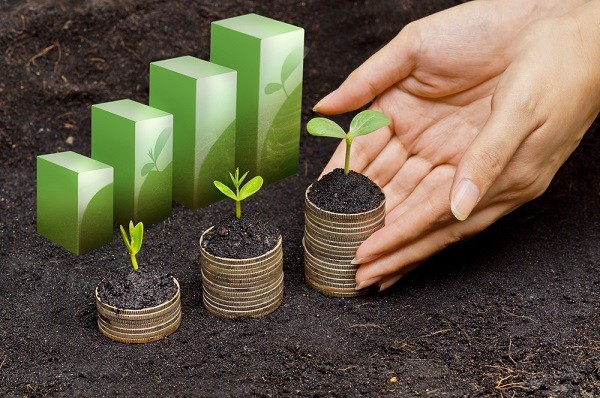Introduction
In the 21st century sustainability is no longer optional it is a business imperative. With the effects of climate change becoming more Sustainable Business Practices in the 21st Century. Sustainable Business Practices in the 21st Century. visible consumers growing more conscious and regulations tightening globally companies must shift from profit-first to planet-and-people-first approaches. Sustainable business practices not only help protect the environment but also foster long-term profitability innovation and brand loyalty.
This article delves into what sustainable business practices are why they matter how top companies are implementing them and how any organization large or small can integrate sustainability into its core operations.
Are Sustainable Business Practices
Sustainable business practices refer to strategies and operations that meet current needs without compromising the ability of future generations to meet theirs. These include reducing environmental impact supporting social equity and ensuring long-term economic health.
Key Pillars of Sustainability:
- Environmental Sustainability Minimizing ecological footprint
- Social Sustainability Promoting fair labor diversity and community welfare
- Economic Sustainability Ensuring long-term financial health and ethical practices
Businesses Must Embrace Sustainability

Consumer Demand
- 73% of global consumers say they would change consumption habits to reduce environmental impact.
- Millennials and Gen Zs prefer to support eco-conscious brands.
Regulatory Compliance
- Governments are introducing stricter climate and sustainability regulations.
- ESG (Environmental Social Governance) reporting is becoming mandatory in many countries.
Cost Savings
- Energy-efficient operations reduce utility bills.
- Waste reduction minimizes material costs.
Investor Interest
- ESG funds saw record growth crossing $40 trillion in assets.
- Investors see sustainability as a risk mitigation tool.
Companies Are Becoming More Sustainable
Reducing Carbon Footprint
- Google became carbon neutral in 2007 and aims to be carbon-free by 2030.
- Apple powers its global facilities with 100% renewable energy.
Sustainable Supply Chains
- Patagonia uses recycled materials and fair labor in its supply chain.
- IKEA sources 98% of its wood from sustainable forests.
Eco-Friendly Packaging
- Unilever and Nestlé are investing in biodegradable and reusable packaging.
- Amazon’s Frustration-Free Packaging reduces waste and improves recyclability.
Waste Reduction Initiatives
- Zero-waste offices and circular economy models are growing trends.
- H&M recycles clothes through take-back programs.
Green HR & Workplace Initiatives
- Remote work policies reduce office energy usage.
- Companies are switching to digital documentation and paperless workflows.
Global Sustainability Frameworks & Standards
To guide sustainable business organizations follow global frameworks like:
UN Sustainable Development Goals (SDGs)
17 goals covering poverty clean energy gender equality and climate action.
Global Reporting Initiative (GRI)
A leading standard for sustainability disclosure.
CDP (Carbon Disclosure Project)
Encourages companies to disclose environmental data.
ISO 14001
Environmental management systems certification.
Top Industries Leading in Sustainability
Renewable Energy
- Wind solar and hydro are replacing fossil fuels.
- Companies like Tesla and Vestas lead innovation.
Fashion (Slow Fashion Movement)
- Brands like Stella McCartney and Eileen Fisher prioritize ethics and recycling.
Food & Beverage
- Plant-based foods (Beyond Meat Impossible Foods) reduce environmental impact.
- Nestlé and Danone are investing in regenerative agriculture.
4. Technology
- Data centers are becoming energy efficient.
- Apple Google and Microsoft have massive carbon-reduction initiatives.
The Cost of Not Being Sustainable
Reputational Damage
Companies like BP and Volkswagen suffered brand damage due to unsustainable or unethical practices.
Legal Risks
Environmental lawsuits are on the rise. In some cases non-compliance leads to shutdowns.
Loss of Market Share
Eco-unfriendly brands risk losing Gen Z and millennial customers.
Increased Operating Costs
Wasteful practices often result in higher long-term costs.
Circular Economy
Instead of the traditional linear model (take-make-dispose) the circular economy focuses on:
- Designing for durability
- Recycling and upcycling
- Extending product lifecycles
Example
IKEA is developing furniture rental and refurbishing models to close the loop on waste.
Sustainable Leadership & Corporate Culture
Leadership Commitment
Sustainability must come from the top. CEO buy-in is crucial.
Employee Involvement
Companies like Salesforce and Google engage employees in sustainability projects green clubs and volunteering.
Diversity and Inclusion
True sustainability also includes workplace equality and community support.
ESG Investing
Environmental Social and Governance (ESG) metrics are now key investment criteria.
Benefits of ESG Focus:
- Lower volatility
- Stronger long-term returns
- Better risk management
Fact: ESG-focused portfolios have outperformed traditional ones during market downturns.
Green Supply Chain Management
Companies are evaluating their entire value chain from raw materials to delivery.
Strategies Include:
- Ethical sourcing (fair trade organic)
- Efficient transportation (electric trucks optimized routes)
- Vendor audits to ensure sustainability compliance
Tech-Driven Sustainability Innovations
AI & IoT for Energy Efficiency
Smart sensors optimize lighting HVAC and manufacturing.
Blockchain for Supply Chain Transparency
Track carbon footprint ethical sourcing and product origin.
Green Chemistry
Reduces toxic outputs in industrial processes.
Renewable Tech
Advancements in solar panels wind turbines and battery storage.
Sustainability for SMEs and Startups
Sustainability isn’t just for big corporations. Small businesses can:
- Use local and eco-friendly suppliers
- Reduce packaging and go digital
- Offer recycling incentives
- Educate customers on sustainable use
Many consumers actively support small, green businesses.
Educating Consumers and Stakeholders

Transparency and storytelling matter. Brands that share their sustainability journey inspire trust.
Tools Include
- Sustainability reports
- Eco-labels and certifications (Fair Trade B Corp)
- Social media campaigns
- Carbon labeling (e.g., CO2 footprint per product)
Future Trends in Sustainable Business (2025–2035)
Net Zero Targets Become Standard
Governments and companies will be expected to meet net-zero carbon goals.
AI-Driven Sustainability
Predictive tools will guide supply chains energy use and product design.
Consumer Activism
Boycotts and brand shifts will hold companies accountable.
Sustainable Real Estate
Green building standards will dominate the commercial sector.
Global Carbon Pricing
Pollution will become more expensive sustainability becomes cost effective.
How to Start a Sustainability Strategy in Your Business
Step-by-Step Framework:
Assess Your Environmental Impact
– Perform an audit of energy waste water and supply chains.
Set Clear Goals & KPIs
– Align with SDGs or ESG targets.
Create a Green Task Force
– Cross-departmental teams to lead efforts.
Implement Eco-Friendly Changes
– LED lighting paperless systems remote work options.
Monitor & Report Progress
– Use tools like GRI or ESG dashboards.
Engage Stakeholders
– Include customers investors and employees in the process.
Continuously Improve
– Review and evolve the strategy annually.
Conclusion
Sustainable business practices are not just good for the environment they are good for business. In a world of rising environmental risks regulatory changes and consumer awareness companies that prioritize sustainability will:
- Future-proof their operations
- Attract loyal customers
- Gain investor confidence
- Reduce costs
- Drive innovation
The 21st century demands a shift in how businesses operate not just for profits but for people and the planet. Those who adapt early will not only survive but thrive in the green economy.

